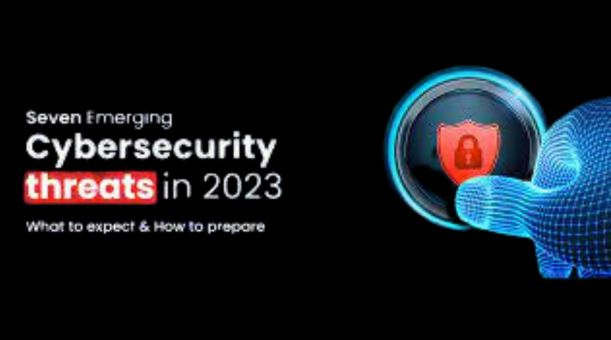What is soc for cybersecurity What is soc for cybersecurityWhat is soc for cybersecurityWhat is soc for cybersecurityWhat is soc for cybersecurityWhat is soc for cybersecurity
In today’s digital age, cyber threats are becoming increasingly complex and sophisticated, making it more important than ever for organizations to have a robust cybersecurity strategy.
One essential component of such a strategy is a Security Operations Center (SOC). A SOC is a dedicated facility that monitors, detects, analyzes, and responds to cybersecurity threats.
It is staffed by a team of cybersecurity professionals who work round the clock to ensure the organization’s IT infrastructure remains secure. This article provides an in-depth look into what a SOC is, why it’s important, and how it operates.
It also covers the different types of cybersecurity threats that a SOC can detect and respond to and the qualifications and skills needed to work in a SOC. Additionally, this article offers insights into how an organization can set up its own SOC or outsource to a third-party provider.
What is Security Operations Center (SOC) in cybersecurity?

What is soc for cybersecurity? What is soc for cybersecurity? What is soc for cybersecurity? What is soc for cybersecurity? What is soc for cybersecurity?
A Security Operations Center (SOC) is a centralized facility responsible for monitoring and managing an organization’s cybersecurity posture. It is staffed by a team of cybersecurity professionals who work together to detect, analyze, and respond to cybersecurity threats.
The SOC is a critical component of an organization’s cybersecurity strategy as it provides real-time threat intelligence, incident response capabilities, and continuous monitoring of the IT environment.
SOC teams use various security tools and technologies to analyze security events, detect anomalies, and investigate security incidents. The goal of a SOC is to identify and mitigate cybersecurity threats before they can cause significant harm to the organization.
Why is a SOC important for cybersecurity?
Here are some importance of a SOC in cybersecurity:
- A SOC continuously monitors an organization’s IT infrastructure and can detect potential cybersecurity threats in real time.
- It enables a proactive response to cybersecurity incidents before they escalate into major problems.
- A SOC can help identify an organization’s network vulnerabilities and provide insights into improving its security posture.
- By collecting and analyzing security data, a SOC can help improve incident response times and reduce the impact of cyberattacks.
- A SOC can help an organization meet regulatory compliance requirements related to cybersecurity.
- The presence of a SOC can help demonstrate to customers and stakeholders that the organization takes cybersecurity seriously and is committed to protecting its data and information.
- A SOC can help prevent reputational damage from cybersecurity incidents and data breaches.
What are the main components of a SOC?
The main components of a SOC include:
- Security Information and Event Management (SIEM) system
- Intrusion Detection System (IDS) and Intrusion Prevention System (IPS)
- Security analytics tools
- Threat intelligence feeds
- Incident response tools and procedures
- Vulnerability management tools
- Security operations playbooks
- Monitoring dashboards and reports
- Security engineers and analysts
- 24/7 monitoring and response capabilities.
How does a SOC detect and respond to cybersecurity threats?
A Security Operations Center (SOC) detects and responds to cybersecurity threats by monitoring and analyzing real-time security events. SOC analysts use various tools, including Security Information and Event Management (SIEM) systems, intrusion detection and prevention systems (IDS/IPS), firewalls, and other security technologies to detect and analyze security events.
When a security event is detected, the SOC analyst investigates whether it is a legitimate threat or a false positive. If the event is a legitimate threat, the SOC analyst initiates an incident response process to contain and mitigate the threat.
The incident response process typically includes isolating affected systems or networks, gathering evidence for forensic analysis, and notifying relevant stakeholders such as the organization’s security team, management, or law enforcement.
Throughout the incident response process, the SOC analyst continuously monitors the situation to ensure the threat is contained and eliminated. The SOC also conducts post-incident analysis to identify the incident’s root cause and determine what actions can be taken to prevent similar incidents from occurring in the future.
What types of cybersecurity threats can a SOC detect and respond to?
A SOC can detect and respond to a wide range of cybersecurity threats.
Here are some common types of threats that a SOC can identify and mitigate:
- Malware and viruses
- Advanced Persistent Threats (APTs)
- Insider threats
- Phishing attacks
- Distributed Denial of Service (DDoS) attacks
- Ransomware
- Zero-day attacks
By detecting and responding to these and other types of threats, a SOC can help prevent data breaches, minimize the impact of cyberattacks, and protect an organization’s reputation and financial well-being.
How can a SOC help prevent cybersecurity incidents from occurring in the first place?

A SOC can help prevent cybersecurity incidents from occurring in the first place by taking a proactive approach to security. Here are some ways in which a SOC can help prevent cybersecurity incidents:
- A SOC can conduct regular risk assessments to identify vulnerabilities in an organization’s network and systems.
- A SOC can use intelligence feeds to stay informed about the latest threats and attack techniques and adjust its security measures accordingly.
- A SOC can provide security awareness training to employees to help them recognize and avoid common cybersecurity threats.
- A SOC can use scanning and management tools to identify and remediate vulnerabilities in an organization’s systems and applications.
- A SOC can develop incident response plans that outline the steps to be taken in a security incident, including procedures for containing, investigating, and remediating the incident.
- A SOC can enforce security policies and best practices across an organization, such as password policies, access controls, and software updates.
By taking a proactive approach to security and implementing these measures, a SOC can help prevent cybersecurity incidents and minimize the impact of any incidents that do occur.
What are the qualifications and skills needed to work in a SOC?
Working in a Security Operations Center (SOC) requires technical skills and personal qualities. Here are some qualifications and skills needed to work in a SOC:
Technical qualifications:
A bachelor’s degree in computer science, information technology, or a related field is often required. Relevant certifications such as Security+, CEH, GIAC, or CISSP are also highly desirable.
Technical skills:
Strong technical skills in network security, threat intelligence, incident response, and security operations are essential. Familiarity with security tools such as SIEM, IDS/IPS, firewalls, and vulnerability scanners is also important.
Analytical skills:
A SOC analyst must be able to analyze security data to identify potential threats and respond to incidents quickly and effectively.
Communication skills:
Excellent communication skills are essential for a SOC analyst to communicate technical information effectively to both technical and non-technical stakeholders.
Teamwork:
A SOC analyst must work well as a team, collaborating with other analysts and security professionals to respond to security incidents.
Attention to detail:
A SOC analyst must be able to pay close attention to detail to ensure that security incidents are identified and addressed effectively.
Adaptability:
A SOC analyst must adapt to changing security threats and new technologies and learn quickly.
A successful SOC analyst should have technical expertise, analytical skills, and personal qualities such as effective communication, teamwork, and attention to detail.
Can a SOC be outsourced, or does it have to be in-house?

A Security Operations Center (SOC) can be either outsourced or in-house, depending on an organization’s needs, budget, and resources.
An outsourced SOC is typically managed by a third-party provider, who assumes responsibility for monitoring and responding to security incidents. The provider’s SOC team can work remotely, providing round-the-clock coverage and expert support to the organization.
Outsourcing the SOC can be an attractive option for smaller organizations that lack the resources to set up an in-house SOC or for larger organizations that prefer to focus on their core business activities rather than managing security operations.
However, outsourcing also comes with certain risks, such as potential data exposure and loss of control over security operations.
An in-house SOC is managed and operated by the organization’s own security team. This approach gives the organization complete control over its security operations, allows for the customization of security solutions to meet specific needs, and can provide greater visibility into security operations. However, setting up and maintaining an in-house SOC requires significant investment in technology, staffing, and training.
Ultimately, whether to outsource or set up an in-house SOC depends on the organization’s goals, risk tolerance, and available resources. Organizations should carefully evaluate the costs and benefits of each approach and choose the option that best aligns with their security objectives and business goals.
How can an organization set up its own SOC?
Setting up a Security Operations Center (SOC) is a significant undertaking that requires careful planning and implementation. The first step is to define the security objectives that the SOC will support, which includes determining the types of security events that the SOC will monitor, the expected response time for different types of events, and the expected level of threat intelligence.
Once the organization has defined its security objectives, it can determine the scope of the SOC, including which systems, applications, and networks the SOC will monitor and protect.
The SOC strategy should be developed based on the organization’s security objectives and scope, defining the SOC’s structure, staffing requirements, technology stack, and processes.
The organization should then select and implement security tools such as a Security Information and Event Management (SIEM) system, intrusion detection and prevention systems (IDS/IPS), firewalls, and vulnerability scanners. Hiring and training SOC staff with the required technical and analytical skills is essential.
Once the SOC is set up, the organization should implement processes and procedures for monitoring security events, incident response, and reporting. It’s also crucial to regularly test and refine the SOC’s processes, procedures, and technology stack.
Continuously monitoring and updating the SOC’s technology stack, staff skills, and procedures to stay current with evolving security threats and new technologies is essential.
Setting up a SOC requires significant resources and investment, but it can help an organization detect and respond to security incidents more effectively and efficiently.
By setting up its own SOC, an organization can gain more control over its security operations and customize its security solutions to meet its specific needs.
conclusion
a Security Operations Center (SOC) is a critical component of a comprehensive cybersecurity strategy for any organization. A SOC’s primary role is to detect and respond to cybersecurity threats, including identifying potential vulnerabilities and mitigating the impact of cyberattacks.
The SOC’s success relies heavily on having the right tools, processes, and people in place. To effectively detect and respond to threats, SOC analysts require specialized skills and training, and organizations need to invest in advanced security technologies such as SIEM systems and IDS/IPS solutions.
While setting up a SOC can be a significant undertaking, the benefits are clear. A SOC can help organizations prevent, detect, and respond to cybersecurity incidents more effectively and efficiently, ultimately reducing the risk of financial loss, reputational damage, and legal consequences. By continuously monitoring and improving their security posture, organizations can stay ahead of the evolving threat landscape and ensure the ongoing protection of their valuable data and assets.




